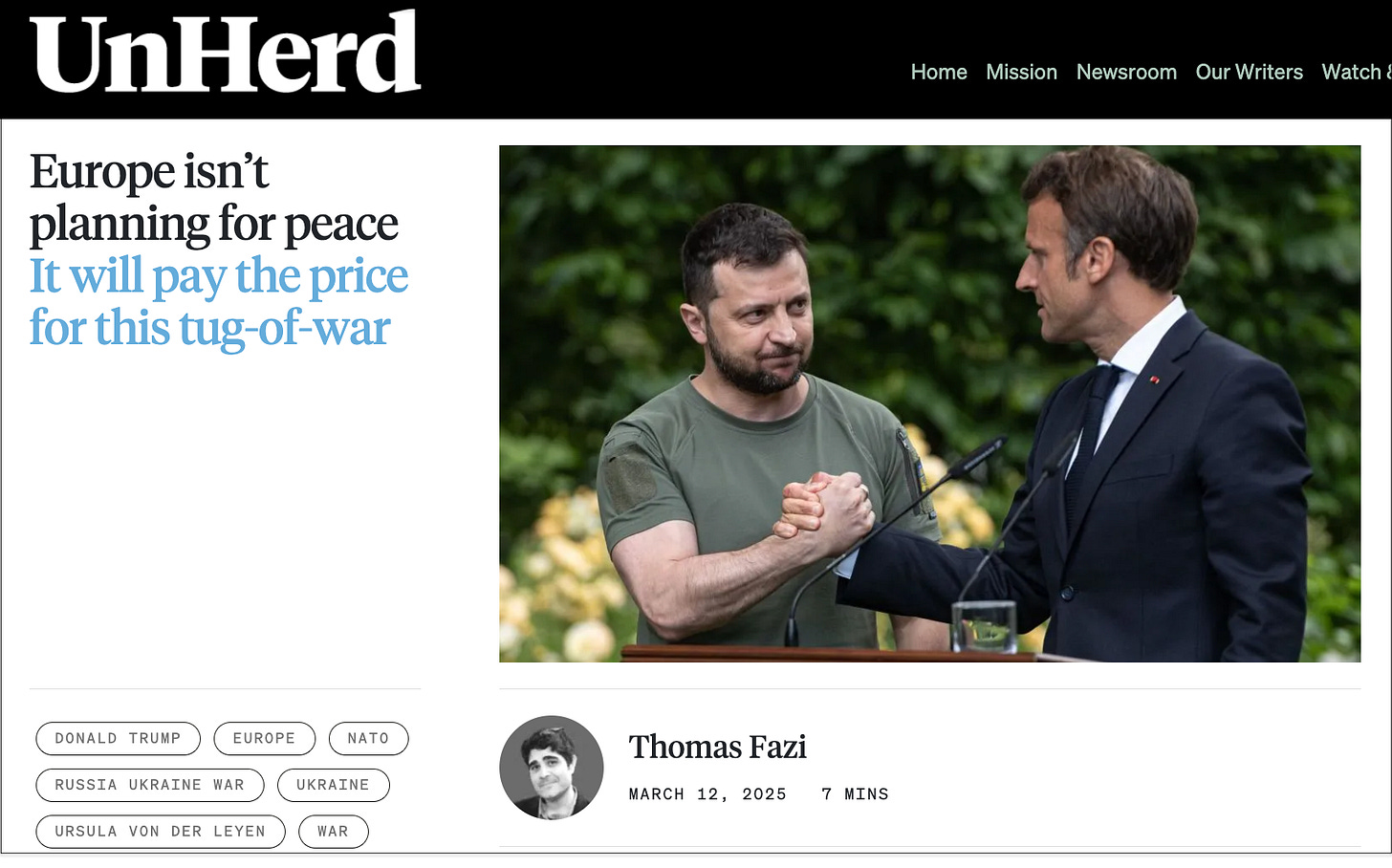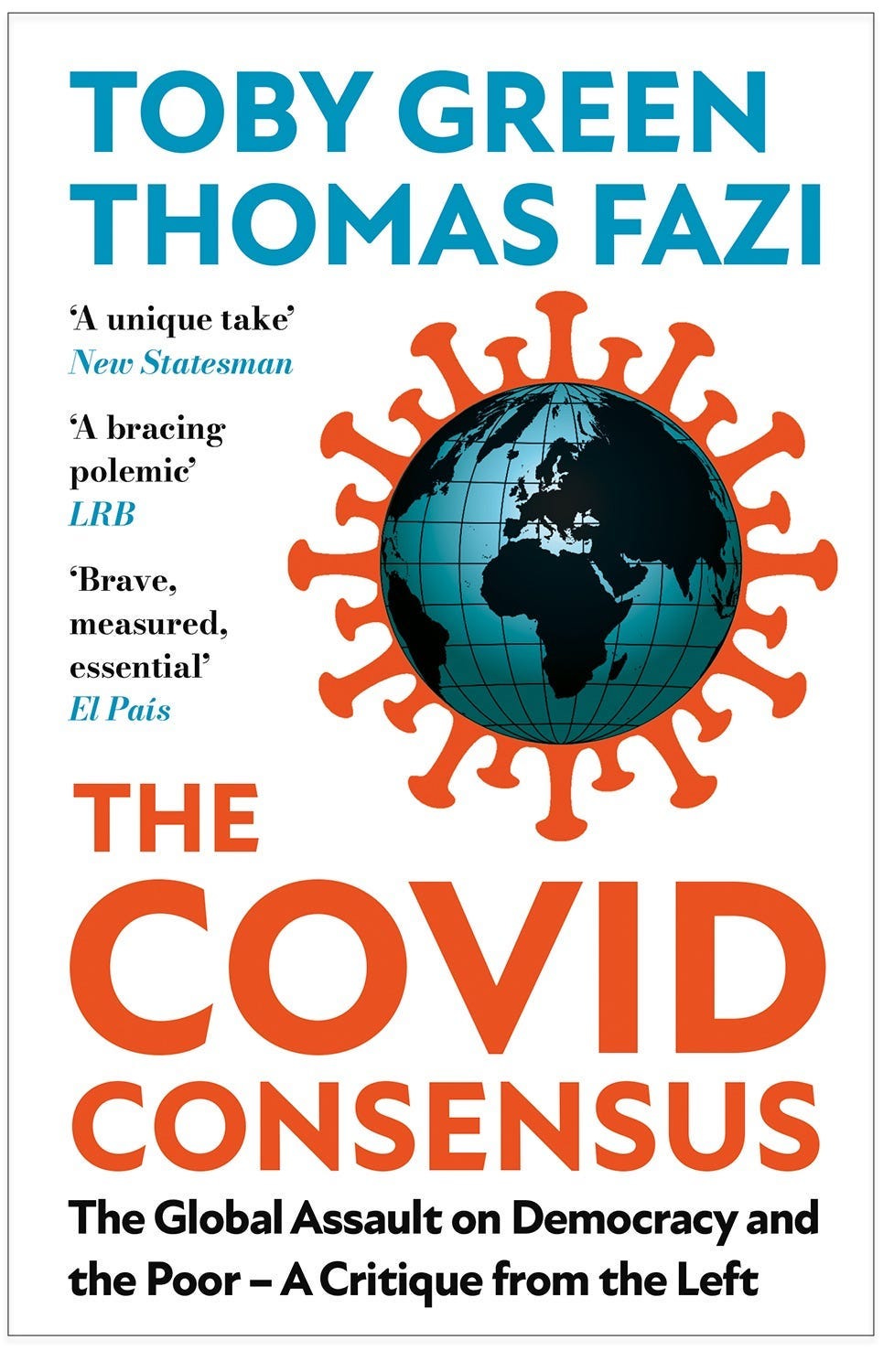Is the ceasefire proposal a trap for Russia?
It’s difficult to see why Moscow would accept a ceasefire in the absence of a broader framework, but that may be precisely the point: to make Putin an offer Europe and Ukraine hope he will refuse
I’ve written for UnHerd about the US-brokered proposal for a 30-day ceasefire in Ukraine, and the many ambiguities surrounding it:
This marks a significant shift in the US approach to ending the conflict. Previously, Washington sought to pressure Ukraine into accepting a US- and Russia-brokered deal largely on Moscow’s terms. Now, America is attempting to strong-arm Russia into accepting a ceasefire as the first step toward a broader peace plan — warning that if Moscow refuses, “we’ll unfortunately know what the impediment is to peace here”, as Rubio put it.
Whether Russia will agree remains uncertain. Moscow has repeatedly stated that it does not view a ceasefire as viable without a broader framework for negotiations. But the parties are far from agreeing on this broader framework. Russia’s demands are clear: above all, legal recognition by Ukraine and the West of Russia’s annexed territories as part of the Russian Federation.
Yet, just days ago, Zelensky reiterated his opposition to any territorial concession, while all European leaders (except Orbán) outlined a “peace strategy” that involved boosting Ukraine’s military capabilities (including through the delivery of air defence systems, ammunition and missiles) in order to improve its position at the negotiating table and achieve a deal that “respects Ukraine’s independence, sovereignty and territorial integrity”. In other words, no territorial concessions. This would be followed by strong security guarantees in the form of European (i.e., NATO) troops on the ground — a demand echoed by Zelensky but firmly rejected by Russia.
It’s difficult to see why Moscow would accept a ceasefire under these conditions — especially as it continues to make gains on the battlefield. But that may be precisely the point from the perspective of Zelensky and European leaders: to “put the ball in Russia’s court”, anticipating that Moscow will reject the offer — thus allowing them to portray Russia as uninterested in peace. If so, it would mean that Trump has been cornered by the pro-war party.
Indeed, ever since Trump began negotiations with Putin to end the proxy war in Ukraine, European leaders have been doing everything in their power to derail his peace efforts, hijack the negotiations and prolong the conflict.
In the article I also talk about why we should consider the possibility that the Europeans aren’t acting along but rather in coordination with elements of the US permanent state and Democratic establishment:
It would be a mistake to view the current transatlantic rift solely through the lens of the diverging interests of the European and American leaderships. Beyond these differences, there may be deeper dynamics at play: a coordination between Europe, the Democratic establishment and the liberal-globalist faction of the US permanent state — the web of entrenched interests spanning American bureaucracy, security state and military-industrial complex. These networks all have a shared interest in derailing peace talks and disrupting Trump’s presidency.
The US has, of course, a long history of political influence in Europe. Over the decades, it has built strong institutional ties with the state apparatuses of Western European countries, particularly among their defence and intelligence services. Additionally, the US establishment exercises considerable influence over European public discourse through mainstream English-language media outlets and think tanks. These organisations, such as the German Marshall Fund, the National Endowment for Democracy, the Council on Foreign Relations and the Atlantic Council, help shape the political narratives that dominate European society — and indeed today are at the forefront of pushing the idea that “no agreement is better than a bad one”.
Its origins lie in the Cold War, with the US actively promoting European integration as a bulwark against the Soviet Union. In other words, the EU, especially through its earlier iterations, has always been wedded to Atlanticism, and this has only intensified post-1991. This is why the EU’s technocratic establishment — specifically the European Commission — has historically been more aligned with America than European national governments. Ursula von der Leyen, dubbed “Europe’s American president”, is a prime example of this alignment, working tirelessly to maintain the EU’s commitment to America’s hawkish geopolitical strategy, particularly regarding Russia and Ukraine.
A key tool in this alliance has always been NATO, which today plays a key role in countering Trump’s efforts to shift the US approach towards Russia. In this context, Europe’s stance, though ostensibly aimed at Trump, stems from the recognition that elements within the US ruling class strongly oppose Trump’s overtures to Putin, harbour deep animosity toward Russia, and view the President’s threats to disengage from NATO and undermine other pillars of the post-war order as a strategic challenge to the systems that have upheld American hegemony for decades.
In other words, what on the surface appears to be a clash between Europe and the US may actually be, in a more fundamental sense, a struggle between different factions of the US empire — and, to a large degree, within the US establishment itself — waged through European proxies. After all, many of today’s European leaders have strong connections to these networks.
Read the article here. If you’re a paid subscriber and you can’t access the paywall write to me at thomasfazi82@gmail.com.
Putting out high-quality journalism requires constant research, most of which goes unpaid, so if you appreciate my writing please consider upgrading to a paid subscription if you haven’t already. Aside from a fuzzy feeling inside of you, you’ll get access to exclusive articles and commentary.
Thomas Fazi
Website: thomasfazi.net
Twitter: @battleforeurope
Latest book: The Covid Consensus: The Global Assault on Democracy and the Poor—A Critique from the Left (co-authored with Toby Green)




you articulate it very well in this paragraph here -
"Indeed, ever since Trump began negotiations with Putin to end the proxy war in Ukraine, European leaders have been doing everything in their power to derail his peace efforts, hijack the negotiations and prolong the conflict. After all, their insistence on a “just and lasting peace”, and their emphasis on Ukraine’s “territorial integrity”, is, in effect, a recipe for continuing the war under the guise of “peace through strength” — the same failed strategy that has landed Ukraine in this mess in the first place. Meanwhile, the Europeans have unveiled a sweeping rearmament plan, aimed at deterring Russia’s alleged expansionist ambitions — if not actually preparing for a war with Russia."
in other words - europe and a number of other key players, are not interested in peace.. this ceasefire rouse is a scam...
The proxy wars. Is actually a civil ideology war here in the USA deep state and its dumb think(less) tanks.
Right on the $$$$$ with this opine Fazo.
But why Europe is drifting further and further right and Russiaphobic is hard yo square to my mind. Do Europeans really think Russia wants to expand it's territory their way. From my perspective Russia is protecting Russian speaking ethnic territories nothing more. I think Russia wants/needs Europe as a trading partner not as an enemy.
People
Planet
Peace
dear comrades
Oppose Oppression
Refuse Fascism